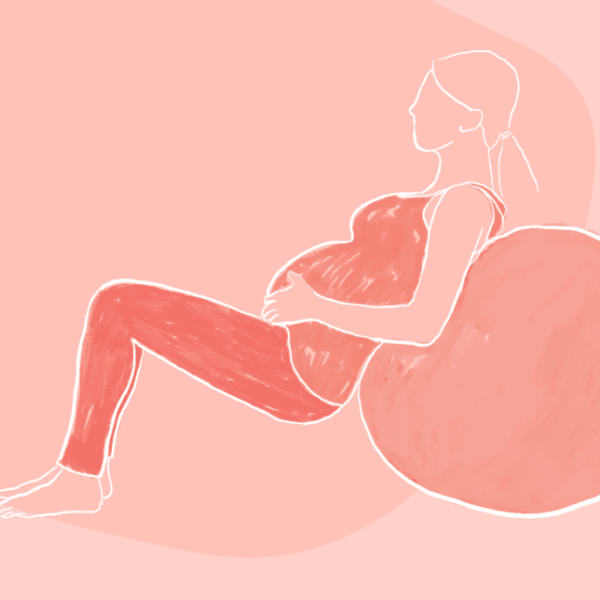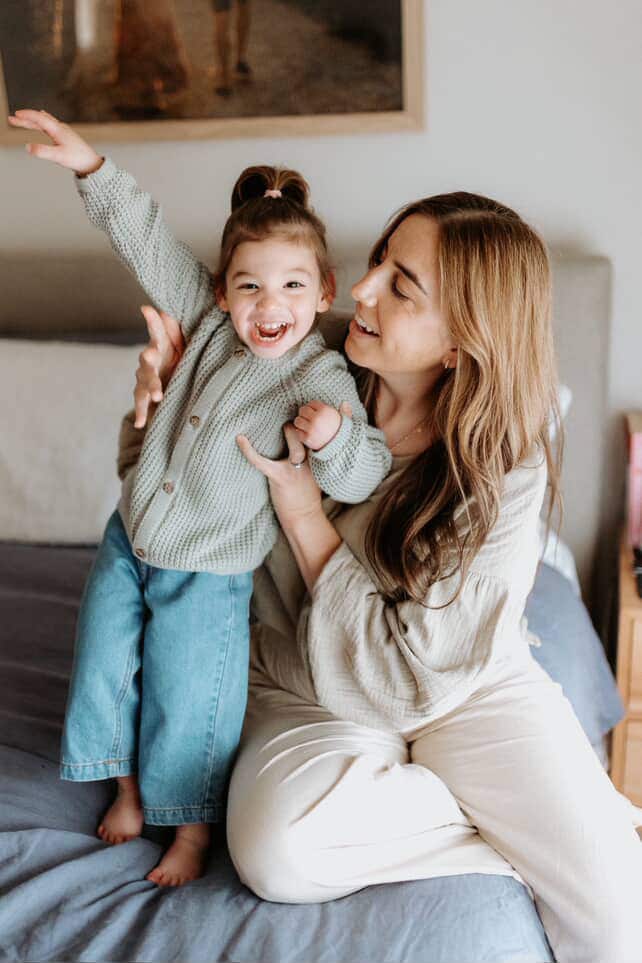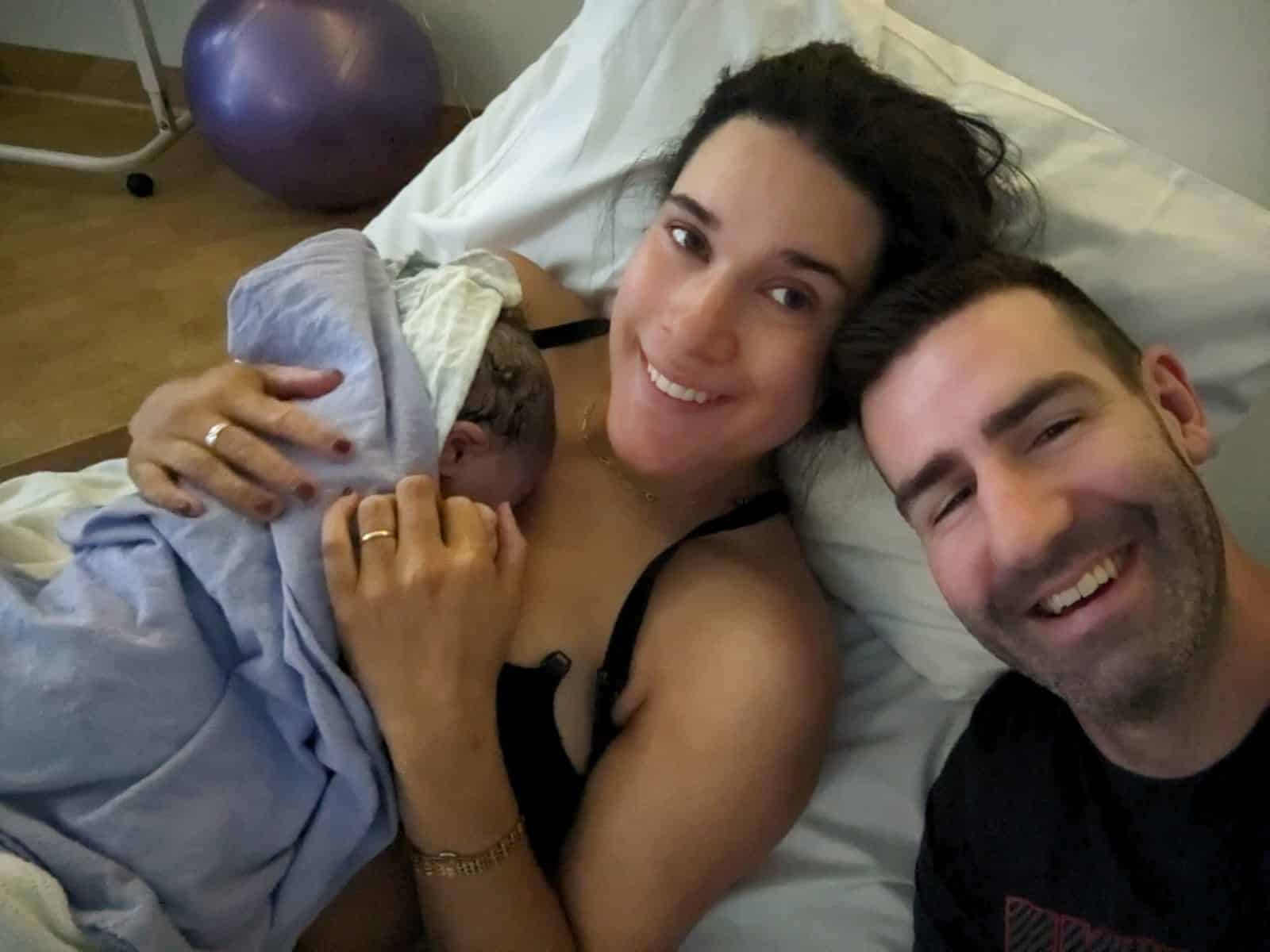Podcasts Shehani
EPISODE 359
Shehani

“We were planning to have a baby and it happened quite quickly for us. In January we flew to Tasmania for a holiday and the morning we were set to leave I did a pregnancy test and it was positive.
“My first trimester was quite easy and I didn’t have any nausea or much discomfort and sometimes I would go throughout my day forgetting I was pregnant. I had a dating scan quite early on and we told our two immediate families at six weeks.
“I started seeing my GP about a year ago and she was so welcoming. She recommended a few private obstetricians to us and we looked into them. We booked an appointment with our chosen OB and we clicked really well with him which was important for us considering we’d see him throughout pregnancy. I also had a student midwife and I loved it; she was so great and helpful and she was so dedicated to being with me every step of the way.
“The Birth Class and the podcast was a great conversation starter between my husband and I and it prompted us to discuss what we’d do, what our options are and it helped us with questions to ask our OB.
“I have ulcerative colitis which is where I have some ulcers growing through my large intestines. I have infusions every eight weeks to manage it; towards the end of the eight weeks I’m often quite tired so that was a concern for me as I neared the end of pregnancy. The drugs I take are quite new so I had to stop them at 30 weeks and as a result I had to take the infusion medication to the hospital so I could have it immediately after birth. Normally I try to manage irritable bowel symptoms through food, exercise and stress management and that definitely worked for me in the third trimester.
“I was 39 weeks when my braxton hicks got a bit more intense. I took the dog for a walk and cleaned the windows and was nesting and by evening they felt more like light contractions. Throughout the night I had contractions every 15 minutes but I was trying really hard to sleep if I could. Having the ball beside the bed and lying over the mattress was what worked best.
“My lower back was really aching by the morning and we called the hospital when the contractions were five minutes apart. The hospital was only 20 minutes away but for the last six minutes I had a contraction that just kept going and going. We got into the birthing suite at 9:50am and the midwife did an internal and I was just praying that I was far enough along that I didn’t have to go home. I was 3-4 cm so they told me I could stay. My OB wanted my waters broken so the process could continue and so they broke my waters which was the weirdest feeling.
“I mentioned that I was happy to have gas and an epidural so the midwives tried to put a cannula in but the midwife tried twice and missed so I had to wait for another midwife to do it. About 10 minutes later they got the gas ready and it didn’t really help the situation, I could still feel everything but it made me feel quite drunk. My back pain was worsening and the midwives were assuming that my baby was posterior. My student midwife arrived at this point and it was so lovely to see a familiar face. I told her that I wanted the epidural and she started organising that for me.
“When the anesthetist came in he wasn’t happy with my cannula so he did it for the fourth time and then put the epidural in. My student midwife was reassuring me and told me it would take 15-20 minutes to kick in. I was lying on the bed and by this point my back pain was getting worse and worse. I felt so much pressure down there and told the midwife that I felt an urge to push but she told me I wasn’t ready yet.
“They eventually did an internal – this was about 1:50pm – and I was fully dilated. They brought out the mirror to help me push and it was really helpful because I could see that it was two steps forward, one step back in regards to the baby coming down the birth canal. I was doing three pushes during one contraction and when my obstetrician came in he encouraged me to do longer pushes. I would take a huge breath and push as much as I could but I didn’t make any noise.
“My obstetrician suggested an episiotomy and I was happy to do it and within the next two or three contractions her head crowned and her eyes were wide open. The midwives caught her and I put my hands out and put her on me and she did a big sneeze and then started crying. She was born at 3:02pm so it was an hour of pushing all up.
“I wanted to see what the placenta looked like so my midwife put it in a bowl and I had a good look. I’d learnt from the podcast about the breast crawl and my midwives were really helpful and told me to be patient and give her a bit of time. It was so magical to see her crawl up and latch to the nipple; it wasn’t the greatest latch but it was so cool to see it happen.
“They stitched me up and then left our room to give us some space. We had about an hour-and-a-half with just us and it was so special and then the midwives came in to check her weight and head circumference. The midwives helped me have a first shower and then we moved to the maternity ward.
“I spent four nights in hospital and it was really lovely to have the support from the nurses and midwives. The toughest thing was the afterbirth pains; it was more painful than labour only because it happened while I was breastfeeding and trying to latch her and deal with the pain was excruciating. Once we were home our mothers took turns to cook for us, clean the house, fill the fridge and walk the dog. They live close by so it’s really lovely to have our family village at this time.”


Topics Discussed
breast crawl, Breastfeeding, Epidural, Episiotomy, One vaginal birth, Private obstetrician, Student midwife, Ulcerative colitis
Episode Sponsor
This episode is brought to you by The Birth Class, my online childbirth education course.
Featuring 10 audio lessons with perinatal health specialists, you can listen from the comfort of your home when you’re relaxed and receptive to new information. The Birth Class is a conversation starter between you and your birth partner that informs, encourages and empowers you to journey towards labour with knowledge and confidence.
In The Birth Class you’ll be guided through every stage of labour and birth, including:
– the powerful role of your hormones to prompt contractions and moderate pain
– what to expect from each stage of labour; from the first contraction to birthing your baby and the placenta
– practical breathing and sound skills to help you navigate contractions and overwhelm
– the benefit of staying active in labour and how it can assist cervical dilation
– how optimal maternal positioning in late pregnancy can encourage your baby into an ideal birth position
– how to prepare for a successful vaginal birth after caesarean (VBAC)
– your pain-relief options, both non-pharmacological and pharmacological
– the risks and benefits of birth interventions and how they can help or hinder labour
– typical complications that lead to an emergency caesarean and what’s involved in the process
– what to expect in the hours after birth, including breastfeeding and blood loss
– breastfeeding advice to guide you through the fourth trimester with confidence.
– and so much more.
Check out The Birth Class here.
Categories
Related Products
-
The Birth Class
107 reviews$249.00The empowering online childbirth education program that will help you confidently prepare for birth.
Join the conversation
Sign up to get the latest updates, freebies, podcast releases straight into your inbox
@AustralianBirthStories
Follow along with us
@AustralianBirthStories
Follow along with us
@AustralianBirthStories
Follow along with us
@AustralianBirthStories
Follow along with us
@AustralianBirthStories
Follow along with us
@AustralianBirthStories
Follow along with us
@AustralianBirthStories
Follow along with us
@AustralianBirthStories
Follow along with us
@AustralianBirthStories
Follow along with us
@AustralianBirthStories
Follow along with us
@AustralianBirthStories
Follow along with us
@AustralianBirthStories
Follow along with us






